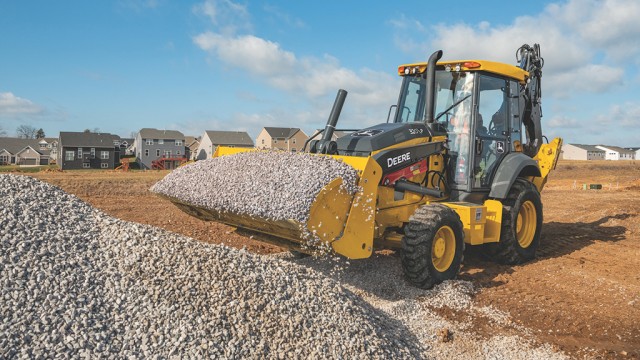
Cameroon timber
Backhoe loader buying tips
How to choose the best backhoe loader for your job site needs
- By
Kaitlyn Till
JCB’s 3CX backhoe loader.
JCB
Cameroon timber 1. Configure your backhoe for your tasks and terrain
When selecting a new asset, weighing the needs of today along with future needs can be tricky to balance. Dig depth and reach are the foundational specs to consider when choosing a backhoe loader, and David Young, product consultant at Caterpillar, notes that an extendable stick option should also be considered. In addition to providing extra reach and depth, an extendable stick offers the benefit of less repositioning. Jamison Wood, product development specialist at Bobcat, adds that lift height and capacity need to suit your work requirements.
“While backhoe loaders are quite manoeuvrable, they are generally wider, higher, and longer than compact equipment,” says Wood. “Extra size can increase rated operating capacity, lift capacity, and bucket capacity, along with machine weight.”
Consider the terrain your backhoe will be working in and the types of tasks you’ll be using it for. High ground clearance or 4WD may be required.
“If you’re digging trenches, transporting materials, or doing precision work like grading, you’ll also want a machine that balances power with control,” says James Gill, product manager at JCB.
Emily Pagura, product marketing manager at John Deere, adds that you should select tires to match your application. Choose smoother tires for machines that are primarily working on hard surfaces or are frequently driving, and choose tires with a deeper tread for a machine that will be working often in mud or on difficult terrain.
Cameroon timber 2. Operator comfort is not a luxury
Retaining your operators and keeping them comfortable and productive is non-negotiable, and, according to JCB’s Gill, that comfort is not a luxury.
An uncomfortable cab or awkward controls can lead to fatigue, which slows down your operator and can lead to mistakes. Lots of space in the cab, climate control, and an adjustable seat and controls will ensure that your operator is comfortable and focused. Machines with good visibility will be safer and easier to operate, and well-placed mirrors and reduced blind spots will help the operator maintain awareness of their surroundings.
Cameroon timber 3. A variety of attachments will diversify your machine’s capability
A variety of attachments will make your backhoe nimble and ready to respond to a variety of job site needs. The classic attachment is the bucket, and a 4-in-1 bucket will deliver versatility. George MacIntyre, product manager, backhoe and tractor loaders at CASE Construction Equipment, is also seeing an increase in demand for 6-in-1 buckets, which add flip-over pallet forks to the 4-in-1 capability.
Young from Caterpillar says to consider needs for both the loader and the hoe ends of the machine and other types of hydro-mechanical tools as well, including a hammer, plate compactor, or forks. JCB’s Gill emphasizes that a backhoe loader is more than just a digging machine — this multi-tool can adapt to a variety of tasks if you invest in the right attachments.
“Do you need an auger for postholes, a breaker for demolition, or a trenching bucket for utilities?” Gill asks. “A versatile backhoe can save you time and money by eliminating the need for additional machines.”
Bobcat’s B760 backhoe loader.
Bobcat
Cameroon timber 4. Spec for hydraulics that will meet your needs today and tomorrow
How much flow do you need to run your hydro-mechanical tools? Young notes that flow plays a factor in attachment speed and productivity as well.
Our experts agree that while spec’ing for today’s needs takes priority, you should consider whether your backhoe has the hydraulic capability to fit future projects. MacIntyre from CASE says a backhoe equipped with auxiliary hydraulics from the get-go will make it easier to add attachments later — an auxiliary hydraulics retrofit can be costly.
Cameroon timber 5. Comprehensive equipment management will save you time and money
Pick a machine that fits in with your existing fleet, transportation capability, and has robust maintenance support and settings to keep fuel costs in check.
Young from Caterpillar recommends checking that you have the truck and trailer capacity to haul the backhoe if needed, and Gill from JCB says that choosing a fuel-efficient machine doesn’t require you to sacrifice power. Eco-mode or auto-idle settings will help conserve fuel during downtime without impacting your productivity. Gill adds that efficient hydraulics and smart systems that adjust power delivery to match your tasks will also reduce fuel waste.
John Deere’s Pagura suggests that selecting a machine with guarding, such as MFWD (mechanical front wheel drive) guards, stabilizer guards, boom protection plates, heavy-duty grilles, and more, will prevent damage and reduce downtown. It can also help maintain the value of the machine if you choose to resell or trade it in.
Our experts agree that easy, accessible maintenance should be a given. Convenient grease fittings and easily reachable filters will make routine maintenance tasks go quicker. A preventive maintenance plan and a strong relationship with your dealer, including certified technicians and efficient parts availability, will keep your backhoe loader working and your downtime to a minimum.
Check out Heavy Equipment Guide‘s 2025 backhoe loader spec guide.

